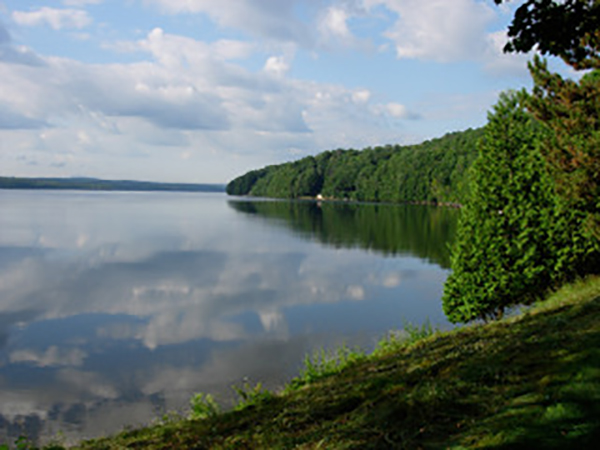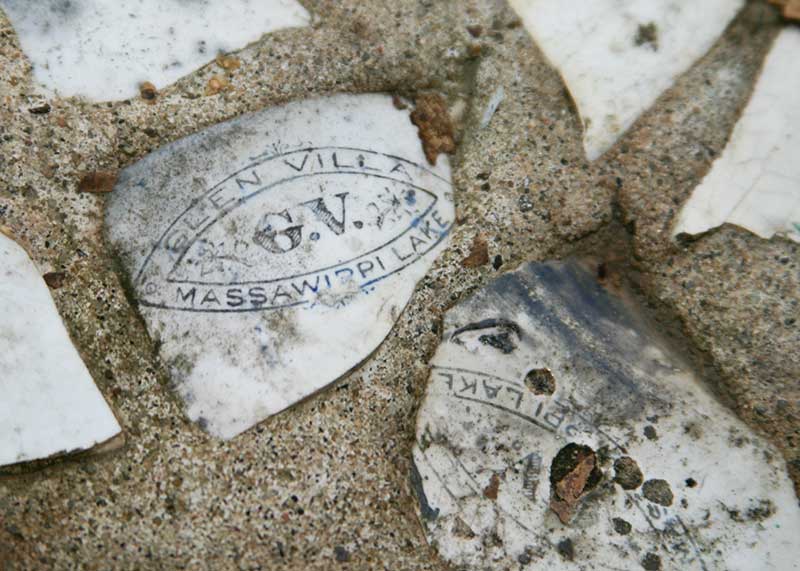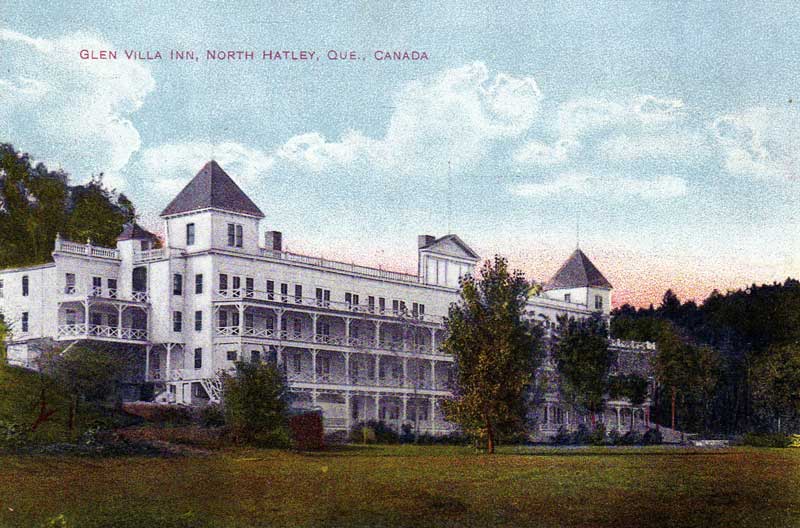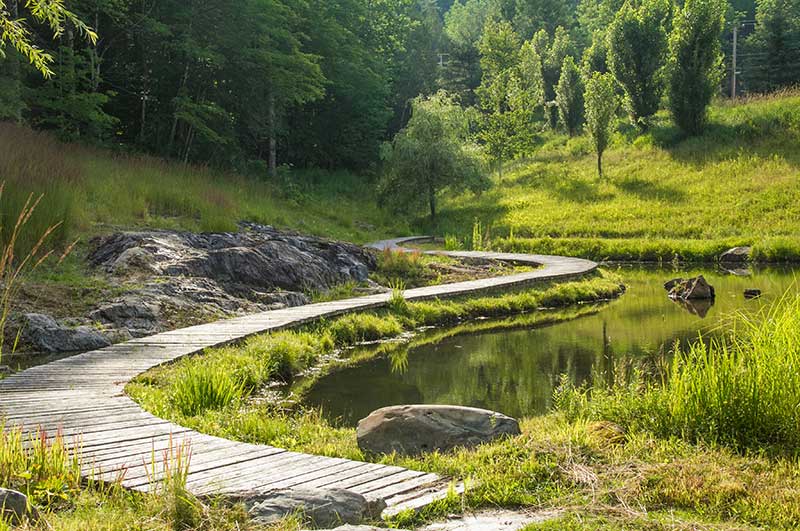Glen Villa Art Garden is a 750-acre property in North Hatley, Quebec, that encompasses lakefront property, farm fields, woodlands and a section of old-growth forest. Located on the traditional territory of the Abenaki, it has been owned and cared for by Norman and Patterson Webster since 1996.
The original inhabitants of this land were the Abenaki. For millennia, they hunted in the woods and fished in the deep waters of Lake Massawippi, crossing the fields and forests that make up today’s Glen Villa while travelling between their summer and winter camps.
Europeans first arrived in the area around Glen Villa Art Garden in the late 17th century, but formal settlement began only a hundred years later. As Loyalists moved north after the American Revolutionary War, Britain divided the southern region of present-day Quebec into townships. In 1803, Henry Cull, an Englishman living in Quebec City, and Captain Ebenezer Hovey, an immigrant from Connecticut, received a land grant of over 20,000 acres in the new township of Hatley, land that included the Glen Villa property. As more and more people moved into the area, lumber was in high demand and a dam was built on the stream running through Glen Villa to provide power for a saw and grist mill. The mill and surrounding land changed hands several times over the following decades, rising in value with each sale.

North Hatley began a transformation into an international resort destination after it was “discovered” by Baltimore residents Dr. Powhatan Clarke and his wife in 1886. The fame of the village spread rapidly among Southerners crippled financially by the American Civil War, and these families came north for the summer, year after year. By the turn of the century, the population included so many visitors that during the high season North Hatley was bursting at the seams. While some regular visitors constructed summer cottages, the need for temporary accommodations led to a proliferation of hotels and boarding houses.
In 1893, the Putney family built a small hotel they named Glen Villa close to the stream that had powered the saw and grist mill. Set “in a secluded nook,” near “a pretty trout brook in which many a speckled beauty hides,” the hotel housed 50 guests, who arrived by steamboat. After the hotel burned down in 1897, local entrepreneur G. A. LeBaron purchased the property and built the second Glen Villa Inn, which opened in 1902.
This hotel was a major tourist attraction, accommodating 200 guests in a three-story wooden structure that was comfortably rustic in the style of the time. The Glen Villa farm furnished vegetables fresh from the garden, milk from the hotel’s Jersey cows and pure water from “living springs.” An orchestra played during meals and provided dance music in a casino that housed a large dance hall, bowling alleys, and rooms for billiards and pool. Guests could play tennis, take carriage rides in the woods, swim or boat on the lake, walk or drive through the woods, or play golf on the hotel’s 9-hole course (lauded by its designer as “particularly attractive”). Visitors came from across North America for extended stays, but the largest number remained tourists from the Southern states.
This second iteration of Glen Villa Inn lasted only slightly longer than the first. In 1909, shortly before opening for its eighth season, the hotel caught fire and burned to the ground, leaving only the golf clubhouse intact. A few years later, following Mr. LeBaron’s death, the land was purchased by William Davidson. Born in the nearby city of Sherbrooke, Davidson had left home while still in his teens to follow Horace Greeley’s advice, heading west first to Vancouver, then onward across the Pacific to Manchuria. He made his fortune in the Shanghai rubber boom of 1909–1912 and returned home a wealthy man. Dividing his time between winters in Sherbrooke and summers in North Hatley, he transformed the hotel dairy farm started by G.A. LeBaron into a prosperous enterprise. After he died, the estate passed to his brother, Robert Davidson, who moved from Oregon to North Hatley to run the farm. Robert became a prominent member of the community, serving as the local Member of Parliament from 1935 to 1943.


In 1947, Robert Davidson sold the farm and his large, rambling house—formerly the hotel’s golf clubhouse—to Eric T. Webster, who renamed the property Glen Villa after the old hotel. In 1964, Mr. Webster sold the lakefront land to his neighbour Douglas Bradley but held on to a small lakefront lot with a summer cottage and many of the surrounding fields and woodlands. In 1996, Eric’s son Norman and his wife, Patterson, bought the lakefront land back from Douglas Bradley, once again christening the property Glen Villa.
Patterson has been working on the garden and surrounding acres ever since, creating art that enhances the natural landscape and explores the evolving history of the land and the people who have inhabited it over the centuries. The Art Garden includes garden rooms, sculptures and art installations. Timelines is a trail through fields and forests that explores history, memory and our relationship to the land through horticulture and art.

